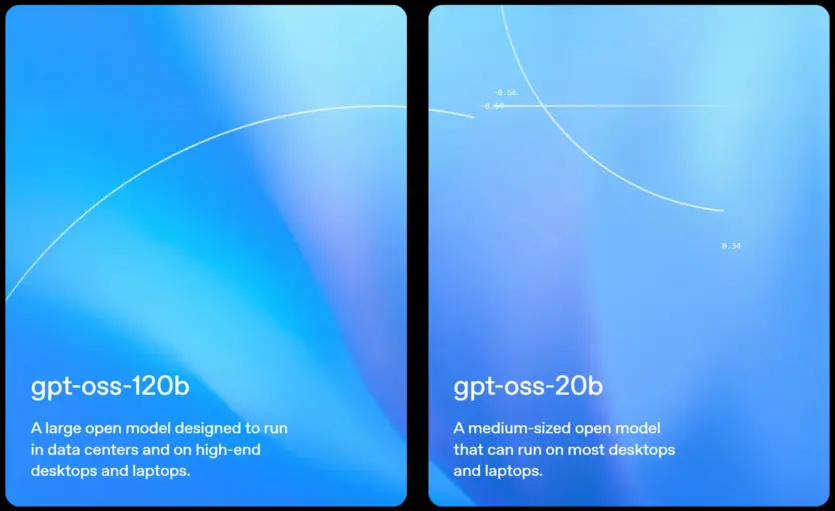
OpenAI has announced the release of two open source artificial intelligence language models: gpt-oss-120b and gpt-oss-20b. They were created as an open alternative to commercial models of the o serieswhile maintaining a fairly high level of capabilities. Interestingly, they can be run locally on video cards and laptops.
OpenAI has two versions that differ in size and target platform:
- gpt-oss-120b is a more powerful model that can be run on a single NVIDIA GPU;
- gpt-oss-20b is a lighter version that works even on laptops with 16 GB of RAM.
These are the first fully open OpenAI models since GPT-2, which was released more than 5 years ago.
OpenAI allows these open models to be used as a “brain” that can delegate tasks to more powerful systems in the cloud. For example, if gpt-oss cannot process an image, it can be connected to one of the commercial models of OpenAIthat can handle it.
In recent years, OpenAI has relied on closed models, selling access to them through APIs. However, competition from Chinese laboratories (DeepSeek, Qwen, Moonshot AI) and a change in the position of CEO Sam Altman forced the company to rethink its approach.
Additionally, the administration of President Donald Trump has called on American companies to open up their AI developments more widely to promote values close to the United States in the global technology environment.
How the models work
Both gpt-oss models are used:
- Mixture-of-Experts (MoE) — an approach that activates only a portion of the parameters for each request, making it more efficient. For example, gpt-oss-120b activates only 5.1 billion out of 117 billion parameters per token.
- Reinforcement learning (RL) — models learned by receiving feedback in simulated scenarios. The same method was used in the commercial o-models of OpenAI.
The models also support “chain thinking” — they can analyze tasks step by step, using additional tools such as Internet searches or code execution.
But there are nuances. Models work only with text — no images or sound. Moreover, they «hallucinate» more often than their more powerful counterparts. For example, on the PersonQA test, gpt-oss models gave inaccurate answers in 49% and 53% of cases, respectively. For comparison, even o4-mini “hallucinated” only 36% of the time. At the same time, the company does not disclose training data, citing legal risks (there are lawsuits against AI companies for using copyrighted data).
The new models showed good results in performance tests:
- Codeforces (programming): gpt-oss-120b — 2622, gpt-oss-20b — 2516 points. Better than DeepSeek R1, but worse than OpenAI o3 and o4-mini.
- HLE (Humanity’s Last Exam): 19% and 17.3%, respectively. Again, — is higher than that of open competitors, but lower than the closed OpenAI model.
Both models are released under the Apache 2.0 license. It allows you to use the models in commercial products for free without asking permission from OpenAI. Also, if necessary, you can modify the code to suit your own needs.
Before the release, OpenAI checked whether gpt-oss could be used for malicious purposes — in particular, to create bioweapons or cyberattacks. The risks turned out to be low, but the company admits that the models can partially facilitate malicious scenarios if they are specially retrained.
Both models are already available for download on the Hugging Face.
Source: techcrunch

Spelling error report
The following text will be sent to our editors: